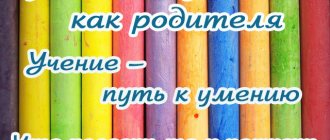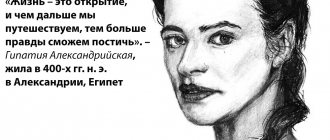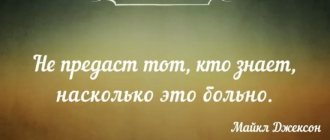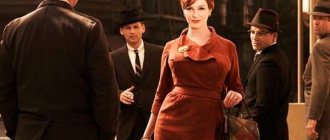The Yasnaya Polyana school was not at all like the rare dull government schools, nor the home schools of peasants, where children were taught by retired soldiers and sextons. In fact, it was the country's first private experimental school. No beatings, calls to class, mindless memorization, answers at the board and grades. Students were allowed to come and go as they wished, no homework was assigned, and work in the classroom took place without special teaching aids.
At first the men were distrustful of learning without spanking, but Tolstoy managed to convince his parents that it was possible to study consciously. Soon up to 70 peasant children of different ages were crammed into the two classrooms of the outbuilding. The result is “with a complete lack of discipline, not a single one was punished. Never laziness, rudeness, stupid jokes, indecent words...”
Thus, long before the advent of the Waldorf system, which is now popular throughout the world, Count Tolstoy formulated and embodied its key principle: the school should adapt to the child, and not vice versa. Yasnopolyanskaya, and later 20 more schools in the district, opened by the writer in her likeness, were built on principles opposite to the dominant education system, which perceived children “as a disciplined company of soldiers, commanded today by one lieutenant, tomorrow by another.”
The classic's thoughts on public school seem very topical in the 21st century.
School in Yasnaya Polyana for peasant children.
About the nature of a child*
Schools established from above and by force are not a shepherd for the flock, but a flock for the shepherd. The school is not established so that it is convenient for children to learn, but so that it is convenient for teachers to teach. The teacher is uncomfortable with the speech, movement, and gaiety of children, which constitute a necessary condition for learning for them, and in schools built as prison institutions, questions, conversations, and movements are prohibited. Instead of making sure that in order to act successfully on any subject, you need to study it (and in education this subject is a free child), they want to teach as they know how, as they please, and if they fail, they want to change the wrong image teachings, but the very nature of the child.
N. Bogdanov-Belsky. Verbal counting. At the public school S.A. Rachinsky. 1895
Pedagogical activity, L. N. Tolstoy’s system
Upon returning from abroad, Lev Nikolaevich turns his Yasnaya Polyana school into a kind of pedagogical laboratory for developing a new system of education and training . At the same time, as a peace mediator, the Krapivensky district of the Tula province established a number of new schools for peasant children. To highlight his experience and the experience of teachers working under his leadership, he publishes the pedagogical magazine “Yasnaya Polyana”. The organization of education and training at the Yasnaya Polyana school was a denial of all the foundations of feudal-bureaucratic pedagogy, jealously protected by the serf-owner government. Instead of drills, cane discipline and cramming - an attentive humane attitude towards children, a friendly and free life for a child in the school community, a conscious study of the elements of science. Children were not forced to study, but they came to school at dawn and left late in the evening. The children were not punished or beaten, but they voluntarily obeyed the teacher’s demands, recognized his authority and behaved exemplary.
The spirit of freedom hovered over the Yasnaya Polyana school. This could not but worry the officials of the feudal government. In the summer of 1862, in the absence of Lev Nikolaevich Tolstoy, a search was carried out at the “seditious” school. They were looking for a secret printing house and illegal literature. And although nothing seditious was found, Lev Nikolaevich was forced to leave work at his school and stop publishing the Yasnaya Polyana magazine. And yet, the three-year experience of the Yasnaya Polyana school and Tolstoy’s articles in the Yasnaya Polyana magazine made a huge impression on progressive Russian people. The new school was shown in practice. The possibility of implementing a reasonable, truly humane system of raising and educating children was proven.
Working for a number of years on the epic War and Peace, Tolstoy did not stop thinking about children, their upbringing, and school work. In a letter to A.A. Tolstoy in 1865, he writes: “I keep thinking a lot about education, I’m looking forward to the time when I start teaching my children, then I’m going to open a new school and I’m going to write a summary of everything that I know about education and what no one knows or what no one agrees with.” Having finished the novel “War and Peace,” L. N. Tolstoy again directs all his vigorous energy to solving large theoretical and practical issues of raising children. He writes “The ABC” in four books, which essentially provides materials on all primary school subjects, from the alphabet to fictional stories, articles on natural science and materials on arithmetic. What importance L. N. Tolstoy attached to his work on the “ABC” can be judged by the following excerpt from one of his letters to A. A. Tolstoy: “My proud dreams about this alphabet are these: two generations of Russians will only learn from this alphabet all the children from royals to peasants will receive their first poetic impressions from it and that, having written this alphabet, I can die in peace.”
Having completed work on the “ABC,” L. N. Tolstoy again set about solving the same problem: he wrote the “New ABC” in one book, and after that “Books for Reading.”
As a true scientist, Lev Nikolaevich Tolstoy did not trust his pedagogical instincts and his knowledge of children. He personally checked all his textbooks for school and through teachers and members of his family in schools.
While living in Moscow, Lev Nikolaevich visited schools and even tried to get a teaching position in one of the elementary schools. However, the Ministry of Public Education did not consider it possible to entrust him with teaching children.
Leo Nikolaevich Tolstoy carried his interest in school and children until his death. Shortly before his death, he had a conversation with the children of the Yasnaya Polyana school about the magazine “Sun” that he had distributed.
How can one explain the deep interest of the greatest of writers in the issues of educating the children of the people? Lev Nikolaevich himself answers this question. He writes: “When I enter the school and see this crowd of ragged, dirty, thin children with their bright eyes and so often angelic expressions, I am overcome with anxiety, horror, the kind that I would feel at the sight of drowning people. Ah, fathers! How to get it out! And here the most precious thing drowns, namely that spiritual thing that is so obvious in children. I want education for the people only in order to save those drowning Pushkins, Ostrogradskys, Filarets, Lomonosovs. And they swarm in every school.” L.N. Tolstoy was an ardent patriot of his Motherland. He saw the power and glory of his Motherland in the development of the creative forces of the people. At every step he became convinced that the rule of the landowners and the capitalists replacing them not only financially ruined the people and the working people, but also kept them in darkness and ignorance. Having taken possession of all the benefits of culture and technical progress, landowners and capitalists, with the help of this culture and this progress, further enslave and rob the people, dooming the working people to poverty and moral savagery. He saw the education of the people as the most important means of reviving his Motherland.
About the school state of mind
It is worth looking at the same child at home, on the street or at school: either you see a cheerful, inquisitive creature, with a smile in his eyes and on his lips, in everything looking for instruction as joy, clearly and often strongly expressing his thoughts with his tongue, then you see an exhausted, cowered creature, with an expression of fatigue, fear and boredom, repeating with its lips someone else’s words in a foreign language - a creature whose soul, like a snail, hid in its house.
It is worth looking at these two conditions to decide which of the two is more beneficial for the child's development. That strange psychological state, which I will call the school state of mind, which we all, unfortunately, know so well, is that all the higher abilities: imagination, creativity, consideration, give way to some other half-animal ability to pronounce sounds, regardless of imagination, counting numbers in a row: 1, 2, 3, 4, 5, perceiving words without allowing the imagination to substitute any images for them - in a word, the ability to suppress all higher abilities in oneself in order to develop only those that coincide with school state - fear, tension of memory and attention...
As soon as the child has reached this position, has lost all independence and autonomy, as soon as various symptoms of the disease appear in him - hypocrisy, aimless lies, dead end, etc., then he has already... fallen into a rut, and the teacher begins to be pleased with him.
"ABC" by Leo Tolstoy.
LiveInternetLiveInternet
Grow spiritually and help others grow. This is what life is all about. L.N. Tolstoy.M.A. Lukatsky
Russian philosophical and pedagogical thought of the second half of the 19th - early 20th centuries, following the tradition established back in the 60s, considered the task of forming the student’s personality as a priority. The teacher's activity in developing the moral characteristics of the student's personality was considered more important than the activity in developing his intellectual abilities. It was argued that the development of the scientific foundations of moral education should not lag behind the development of the scientific foundations of teaching. “To instill moral aspirations in a person, to make him a tireless fighter for moral ideals, so that his whole life serves as a living embodiment of this ideal,” wrote K.N. Wentzel, is the most difficult and at the same time... the most important matter in the field of education. Physical and mental education plays, one might say, only a purely service role in relation to moral education. And yet nowhere has so little been done both in the sense of theoretical study and in the sense of practical application as in the field of moral education. This is understandable - the task of moral education, which covers the entire life of a person, with both his animal physiological needs and his highest spiritual interests, is incomparably broader and more complex than those tasks, the solution of which is the main content of treatises on physical or mental education” /1, p. .1/.
This understanding of the main task of the educational process dictated to scientists and teachers the primary requirement - to develop the theoretical foundations of moral education. Noting the insufficient theoretical development of the foundations of the moral formation of personality, scientists associated the main reason for this phenomenon with the complexity of the object of study itself. “...Moral education,” noted L.E. Obolensky, “as a science, it has lagged behind not only medicine, but even the scientific development of mental education.” And this is by no means accidental, he argued, because “the intellectual side of man is not as complex and intricate as his moral side; the logic of thought is more definite, clearer, simpler than the logic of feelings and emotions, sometimes elusive due to its complexity, confusion and ability to change under the slightest influence” /2, pp. 78 - 79/.
Determining the essence of morality and resolving the issue of the goals and objectives of moral education, scientists proceeded from the fact that since a person lives in society, he can most fully realize his life potential only in it. It follows from this, they argued, that there is an objective need for the formation of a social, rather than egoistic, orientation of each individual. This means that a person’s desire for the common good, his love for his neighbor should act as criteria for assessing the moral development of an individual. Therefore, the main task of moral education is to teach the child to establish the correct hierarchy of moral aspirations, to be aware of the goals of his actions, and to direct them towards establishing harmony between the personal and the social. “Establishing harmony between one’s life and the life of the rest of humanity is a goal that constitutes the highest task of morality” /1, p.9/, emphasized K.N. Wentzel.
In the matter of moral education of students, domestic pedagogical theorists believed that the decisive role is played not so much by the properly organized activities of the teacher, but by his personal qualities. “The personality of the teacher in a teaching environment takes first place,” argued P.F. Kapterev. “One or another of its properties can increase or decrease the educational impact of training” /3, p.595/. One of these properties, according to domestic teachers, is constant self-improvement, the teacher’s work on his own development. “There is nothing worse than a teacher who has come to the unfortunate thought that he himself is already sufficiently learned and developed... that from now on his task is to enlighten only others, and not himself,” emphasized P.F. Kapterev. “Between such a teacher and students, that invisible, spiritual connection is inevitably broken, which in a true, real school connects them together, brings them closer together and makes them friends - the need for development and work on their education” /3, p.600/.
The outstanding teacher Lev Nikolaevich Tolstoy, who devoted his entire life to the study of the human phenomenon, saw one of his main tasks in revealing the issues of the formation of man as a moral being. Position of L.N. Tolstoy on the issues of determining the essence of moral education, the influence of the teacher’s personality on his success, being in many ways consonant with the humanistic pathos of Russian pedagogical thought of the second half of the 19th - early 20th centuries, contains a number of significant distinctive features.
For L.N. For Tolstoy, education is “the impact on the hearts of those we educate.” He asserts that you can influence the hearts of those you educate “only through hypnotism, through the contagiousness of an example.” “The child will see,” the thinker writes, “that I get irritated and insult people, that I force others to do what I can do myself, that I indulge my greed and lusts, that I avoid work for others and seek only pleasure, that I am proud and I am vain about my position, I say evil things about others, I say things behind their backs that are not what I say to their faces, I pretend to believe what I don’t believe in, and thousands and thousands of such actions or the opposite actions: meekness, humility, hard work, self-sacrifice, abstinence, truthfulness, and is infected by one or the other a hundred times more powerful than by the most eloquent and reasonable teachings.” “And therefore,” concludes L.N. Tolstoy, “everything or 0.999 of education comes down to an example” /4, p. 12/.
Children learn and are brought up, the thinker believes, only thanks to the contagiousness of the example, in a state that he calls “the first degree of hypnosis.” Everything that is taught to children is written by L.N. Tolstoy, “from prayers and fables to dances and music - all this is a conscious suggestion; everything that children imitate, regardless of our desire, especially in our lives, in our actions, is an unconscious suggestion. Conscious suggestion is training, education, the unconscious is an example, education in a close sense, or... enlightenment” /4, p. 17/.
The suggestibility of children puts them under the complete power of adults. And therefore, the Russian philosopher insists, “one cannot be insufficiently attentive” to what and how is being instilled in them. The thinker states that almost all forces in society are directed towards developing the foundations of conscious suggestion - education, while unconscious suggestion - education, “due to the fact that our life is bad,” is neglected. “In education always, everywhere,” writes L.N. Tolstoy, - everyone had and still has one mistake: they want to educate with reason, with one mind, as if the child only has one mind. And they educate one mind, and everything else, that is, everything that is important, goes as it wants. They think about the system of education with reason again, and they want to lead everything according to it, not realizing that educators themselves are people and constantly deviate from reason. In schools, teachers sit in the pulpit and cannot make mistakes. Teachers also stand in front of their students at the pulpit and try to be infallible” /5, vol. 61, p. 122/.
The thinker insists that education, unconscious suggestion, “is the most important thing” /4, p. 18/. In addition, he argues, for education to be moral, it is necessary for the educator to live a moral life himself. Only in this case, the domestic teacher insists, the teacher’s personal example becomes a powerful educational factor. “To educate well,” writes L.N. Tolstoy, “you must live well in front of those you educate” /4, p. 14/. The main feature of a person’s “good life,” according to the views of the Russian philosopher, is his desire to improve in love. “If educators have this same thing, and if children become infected with it, then education will not be bad” /4, p. 18/.
“Education seems to be a complex and difficult matter,” says L.N. Tolstoy, - only as long as we want, without educating ourselves, to educate our children or anyone else. If you understand that we can educate others only through ourselves, then the question of education is abolished and one question of life remains: how should we live ourselves? Because I don’t know a single action of raising children that would not be included in raising oneself. How to dress, how to feed, how to put to bed, how to teach children? Just like yourself. If father and mother dress, eat, sleep moderately, work and study, then the children will do the same” /4, p.11/.
The thinker believes that in order to achieve positive success in the moral education of students, the teacher should adhere to two basic rules: “not only to live well, but to work on oneself, constantly improving, and not to hide anything from one’s life from children.” L.N. Tolstoy emphasizes that “it is better for children to know about the weaknesses” of their teachers than for them to feel that they have a hidden and ostentatious life. The domestic thinker was against the old pedagogical dogma, according to which education is possible only through positive examples, and the negative in life and people only corrupts and morally disfigures people. In his opinion, practice clearly demonstrates that it morally educates not only the positive, but also the negative. Discussing this topic in his diary, L.N. Tolstoy writes on June 23, 1903: “I am a very bad person, very stupid to good, and therefore I need great efforts not to be a complete scoundrel... Yuri Samarin once said very well that he is an excellent mathematics teacher because that he is very stupid in mathematics. I am absolutely the same in mathematics, but most importantly, the same in the matter of good - I am very stupid, and therefore not completely bad - no, I can boldly say: a good teacher” /5, vol. 54, p. 180-181/. The Russian teacher did not see any paradox of moral education in this. He believed that a bad person could be a good moral teacher, but only under one condition: he must make good efforts. In addition, the ugly and morally ugly evokes a feeling of disgust in both a child and an adult, because God has implanted a moral sense in them, the forces of good pulsate within them.
Almost all the difficulties of moral education, the domestic teacher claims, stem from the fact that educators themselves not only do not eliminate their shortcomings, “but even without recognizing them as shortcomings, justifying them in themselves, they want not to see these shortcomings in children” /4, With. eleven/. This, according to the thinker, leads to the fact that in the modern world, instead of raising children, a struggle is being waged. “And pedagogy, losing its rational foundations, becomes the science of “how, while living badly, you can have a good influence on children.” L.N. Tolstoy denies the moral principles behind such pedagogy and compares it with pseudo-medicine, which teaches how, “living contrary to the laws of nature, still be healthy” /4, p. 15/.
Education, from the point of view of the thinker, is a “consequence of life.” “It is usually assumed,” writes L.N. Tolstoy - that people of a certain generation know what people should be like in general, and therefore can prepare them for such a state. This is completely unfair, he argues, people, firstly, do not know what people should be like, they can, at best, only know the ideal to which they tend to strive; secondly, people who educate themselves are never ready, not educated, but themselves, if they are not dead, move and are educated.” And therefore, the teacher concludes, “all education comes down to living well yourself, i.e. move yourself, educate yourself” /4, p. 14 - 15/. “All education consists of becoming more and more aware of one’s mistakes and correcting oneself from them” /4, p. 12/. Only through this activity of self-education, according to the Russian philosopher, “people influence others” /4, p. 15/.
“From upbringing,” writes L.N. Tolstoy, they usually demand both too much and too little. To demand that those brought up learn this and that, to be educated, as we understand education, is impossible, and it is also impossible for them to become moral, as we understand this word. But it is absolutely possible,” he insists, “not to be a participant in the corruption of children... but throughout your entire life, to the best of your ability, to influence them, infecting them with an example of goodness” /4, p. 12/.
According to the point of view of L.N. Tolstoy, “school business” will then be “one of the most useful things”, and not “the most trivial, harmful and bad”, when the teacher will, to the best of his ability, both by example and by word, “instill in children truly moral, based on religious Christian principles , beliefs and habits” /5, vol. 38, p. 156/. In order to educate children in word and deed on true moral values, the teacher must know in what sequence and how this activity should be structured. For spiritual life, L.N. Tolstoy emphasizes, compliance with this rule is of fundamental importance. After all, deviation from it deprives a person of the most important thing - the benefit of self-improvement and removes him from the most important thing - leading a good life.
“The correct sequence of acquiring good qualities,” the thinker believes, “is a necessary condition for moving towards a good life.” And therefore, he asserts, “always all the teachers of mankind have prescribed for people a known, unchanging sequence of acquiring good qualities” /5, vol. 29, p. 58/. The domestic teacher finds confirmation of this in the teachings of “Brahmins, Buddhists, Confucians ... sages of Greece” /5, vol. 29, p. 58/, in which “stages of virtues” are highlighted, and it is stipulated that the highest of them cannot be achieved until the lower one has not been passed.
L.N. Tolstoy himself instilled in children spiritually elevating truths in the form of conversations with them on moral issues. In full accordance with his ideas about the stages and sequence of the spiritual and moral development of man, the thinker identified “about 20” sections - topics on which he “taught morality to children.” In the article “Conversations with children on moral issues,” L. N. Tolstoy wrote: “Having collected the moral truths expressed by different thinkers and presenting them in accessible... language, I divided them into sections and every day I read to the children one thought from one... section and, Having read, he asked them to repeat in their own words what they had read, explaining what was unclear and answering questions raised by the reading. I had about 20 such departments. I say about 20 because I didn’t quite settle on the number of departments - I’ll either add or subtract them” /5, vol. 37, p. 31/.
The thinker identified the following as the main thematic sections: “1) God. 2) Life in the will of God. 3) Man is the son of God. 4) Reason. 5) Love. 6) Self-improvement. 7) Effort. Thoughts. 9) Words. 10) Actions are deeds. 11) Internal temptations. 12) External temptations. 13) Humility. 14) Self-denial. 15) Non-resistance. 16) Living in the present. 17) Death. 18) Life is good. 19) Faith." /5, t.37, p. 31 - 32/.
2) Life in the will of God. 3) Man is the son of God. 4) Reason. 5) Love. 6) Self-improvement. 7) Effort. Thoughts. 9) Words. 10) Actions are deeds. 11) Internal temptations. 12) External temptations. 13) Humility. 14) Self-denial. 15) Non-resistance. 16) Living in the present. 17) Death. 18) Life is good. 19) Faith." /5, t.37, p. 31 - 32/.
The domestic teacher especially focused attention in his work on the issue of the moral responsibility of the teacher for the content of educational activities. “The great sin of people who have taken up the work of education, enlightenment” and commit “the terrible evil of deception” in relation to children who cannot even “imagine a reason for which old people could deceive them,” is, according to L.N. Tolstoy, in that the “insidious lie” instilled into the “truthful hearts” of children distorts their entire subsequent life /5, vol. 38, p. 159/. Confirming his point of view, the Yasnaya Polyana teacher appeals to the Gospel: “Whoever causes one of these little ones who believe in Me to stumble, it would be better for him if a millstone were hung around his neck and he were drowned in the depths of the sea” (Matt. Chapter XVIII) , art. 6). The teacher, the thinker asserts, who looks at his work “strictly before God, before his conscience,” must try to lay in the “receptive, truth-hungry hearts” of children “the foundations of eternal, religious truths and real Christian morality, which is so easily perceived by children’s souls.” /5, t.38, p. 159/.
The high receptivity of eternal religious truths by children is connected, according to L.N. Tolstoy, not only with the psychological characteristics of their development. “We think,” he writes, “that the soul of a child is a blank slate on which you can write whatever you want. But this is not true, the child has a vague idea that there is that beginning of everything, that reason for his existence, that force in whose power he is, and he has that very high, vague and inexpressible idea, but recognized by the whole being about this beginning, which is characteristic of reasonable people... A child has a vague and correct idea of the purpose of this life, which he sees in the happiness achieved by the loving communication of people... Every child also has the consciousness that a person’s duties are very complex and lie in the moral sphere "/5, t.72, p.265/.
V.V. Zenkovsky in the book “Russian Pedagogy in the 20th Century” (1960) argues that, starting with K.D. Ushinsky, in Russian pedagogical science, admiration for the inner nature of the child, faith in the pure powers of the child’s soul prevailed. This understanding of the essence of a child’s soul goes back, according to the religious philosopher and teacher, to the teachings of J.-J. Rousseau on the “radical goodness” of childhood nature. Considering the teaching of J.-J. Rousseau about the “radical good” of children’s nature is as one-sided as I. Kant’s teaching about the “radical evil” of human nature, V.V. Zenkovsky proposes to combine both of these teachings, combining them with the Christian teaching about man as the image of God and the teaching about the sinfulness of man. It was from these positions that V.V. Zenkovsky criticized the views of L.N. Tolstoy for upbringing, seeing in them an admiration for the natural forces of the child’s soul. It is impossible, he believed, to combine in the theory of the educational process the principles of serving good and self-improvement of the individual with the principle of “non-resistance to evil by force.” Criticism of L. N. Tolstoy’s views on the essence of education by V. V. Zenkovsky cannot be considered completely fair, since the Yasnaya Polyana teacher in 1880 - 1910. a doctrine is being specially developed about the spiritual growth of man, his moral self-improvement as a consequence of overcoming sins (which have a natural, i.e. innate conditionality), temptations and superstitions. This is confirmed, for example, by the final work of L.N. Tolstoy’s “The Way of Life”, in which 15 out of 31 chapters are devoted to the fight against sins, temptations and superstitions. In the article “Conversations with children on moral issues” (1907), the problem of abstaining from committing evil deeds is also addressed by L.N. Thick in several sections. L.N. Tolstoy emphasizes that only with a “reasonable”, religious and moral basis, education (conscious suggestion) becomes what it should be - the most effective means of spiritualizing and harmonizing the personal and social lives of people. Otherwise, education, the Russian thinker asserts, becomes nothing more than a heap of “empty, random, unnecessary knowledge, called science, which is not only not useful, but brings the greatest harm to people, hiding from them the need for the knowledge that people need” /5, v.38, p.67/.
When discussing perfect formation, the thinker draws an analogy between it and a sphere, from the center of which comes an infinite number of radii that can be extended to infinity. The perfection of education, the Russian philosopher believes, is achieved not by “students learning a lot from a randomly chosen field of knowledge, but by ensuring that, firstly, out of an infinite amount of knowledge, knowledge about the most important and necessary subjects is first transmitted to students, and secondly, so that this knowledge is brought to a relatively equal degree, so that the taught knowledge, like the same length and equally evenly spaced radii that define the sphere, constitutes a harmonious whole”/5, vol. 38, p. 64 /.
Such a choice of knowledge and its reasonable distribution was possible in the European world, believes L.N. Tolstoy, as long as people believed in the form of the Christian religion that united them. In the modern world, the thinker writes, “when the majority no longer have this faith, the question of what knowledge is generally useful, what can be harmful, what is needed first, what after and to what extent this or that should be brought, is no longer has no basis for its decision and is decided haphazardly and completely arbitrarily by those people who have the opportunity to forcibly transfer this or that knowledge.” And it is decided, in the opinion of the domestic teacher, in the way that is “most convenient and profitable for these people at this time” /5, vol. 38, p. 65/.
As a result of this, the thinker insists, the “amazing phenomenon” occurred that in schools “knowledge is distributed not only unequally, but in the most monstrous proportions.” Continuing the comparison of education with the sphere, L.N. Tolstoy argues that some of the knowledge transmitted to students, like radii, “reach the largest dimensions, while others are not indicated at all.” What happens, writes a domestic teacher, is that “people acquire knowledge about distances, densities, movements of stars billions of miles away from us, about the life of microscopic animals, about the imaginary origin of organisms, about the grammar of ancient languages and similar nonsense, but do not have the slightest concepts of how their brothers live and lived - people not only separated from them by seas and thousands of miles and centuries, but also people who now live next to them, in a neighboring state: what they eat, how they dress, how they work, how they get married , raise children, what are their customs, habits and, most importantly, beliefs” /5, vol. 38, p. 65/.
According to the point of view of L.N. Tolstoy, if education becomes completely free and is built on a religious and moral foundation, then all other knowledge will be distributed in the way “as is characteristic of them, in accordance with the conditions in which the society in which they will be located will be located.” to teach and perceive knowledge” /5, vol. 38, p. 69/.
In May 1901, the thinker in a letter to P.I. Biryukov outlined his thoughts on organizing a free school. Education,” he writes, “...is nothing more than the transmission of what the smartest people thought. Smart people always thought in three different directions...
- philosophically, religiously about the meaning of one’s life - religion and philosophy;
- experimentally, drawing conclusions from well-known observations - natural sciences: mechanics, physics, chemistry, physiology;
- thought mathematically, drawing conclusions from the principles of their thoughts - mathematics and mathematical sciences.” L.N. Tolstoy believes that “all these three types of sciences are real sciences.” It is impossible, he writes, “to imitate their knowledge,” and there cannot be “half-knowledge in them—you know or you don’t know.” All these three types of sciences, in his opinion, “are cosmopolitan - all of them not only do not separate, but connect people. All of them, the thinker claims, “are accessible to people and satisfy the criterion of the brotherhood of man.”
L.N. In addition to identifying three types of sciences, Tolstoy also identifies three ways of transmitting them. “The first method of transmission is the most common - words. But the words are in different languages, and therefore there is also a science - languages, again corresponding to the criterion of the brotherhood of people... The second method is plastic art, drawing and modeling, the science of how to convey to the eye what you know to another. And the third way is music, singing - the science of how to convey your mood, feeling” /5, vol. 73, p. 66/. L. N. Tolstoy’s selection of two directly related to art (drawing, modeling, music, singing) from the “three methods of transmitting” the content of “real sciences” is by no means accidental. This is explained by the native thinker’s original understanding of the essence of the relationship between the concepts of Truth, Goodness and Beauty. For L. N. Tolstoy, a true aesthetic work is a synthesis of goodness, beauty and truth: goodness (the moral attitude of the author to the subject), beauty (clarity of presentation or form), truth (sincerity of expression of the artist’s feelings). This is precisely what explains why, when selecting “methods of transmitting” the content of “real sciences” to students, the domestic thinker assigns a dominant place to methods directly related to art (of the three main ways of transmitting data from “real sciences,” L.N. Tolstoy identifies two).
In addition to these six “branches of teaching” (“three kinds of real sciences” and three kinds of sciences - “methods of transmitting real sciences”), according to the domestic teacher, a seventh one should be introduced into the educational process: teaching mastery, and again corresponding to the criterion of brotherhood , i.e. something that everyone needs - plumbing, painting, carpentry, sewing...". In general, according to L.N. Tolstoy, the entire teaching process “breaks down into seven subjects.” Complete freedom of learning should allow, the thinker believes, each student to independently decide “what part of the time to spend on each, in addition to compulsory labor for their service” /5, vol. 73, p. 66/.
The domestic teacher argued that introducing students to “manual labor” is a prerequisite for their moral education. L.N. Tolstoy did not regard “manual labor” as an independent principle, but “considered it the simplest and most natural” application of the moral rule: “to force others to serve yourself as little as possible and to serve others as much as possible.” Demand as little as possible from others and give as much as possible to others” /5, vol. 64, p. 92/. For the Russian thinker, the introduction of “manual labor” into the educational process was also a mandatory requirement for the reason that the main drawback of his contemporary society was, in his opinion, “freeing oneself from this labor and using, without any reciprocity, the labor of the poor, ignorant, unfortunate classes, who are slaves, similar to the slaves of the ancient world” /5, vol.64, p.92/.
The thinker especially insists that only with complete freedom is it possible: 1) “to lead the best students to the limits to which they can reach”, 2) to avoid such a common phenomenon as “causing disgust for objects that in their time and freely would be loved,” 3) “find out which specialty which student has an inclination for.” And the most important thing, from the point of view of L.N. Tolstoy, is that only freedom does not violate the educational influence. “Otherwise,” he writes, “I will tell the student that there is no need for violence in life, and I will commit the most severe mental violence against him” /5, vol. 73, pp. 66-67/.
Summing up his reasoning about the free school, the domestic thinker concludes: for teachers who are seriously concerned with issues of education, the “main” concern “can and should consist, first of all, in developing a religious and moral teaching appropriate to our time and, having developed such, putting him at the head of education” /5, vol. 38, p. 69/.
Considering that for L.N. Tolstoy the essence of religious teaching comes down to answers to the question about the meaning of human life, and moral teaching - to how to realize this meaning, it becomes obvious that the domestic teacher saw the role of education, first of all, in the development of the spiritual essential powers of the child, and not in the transfer of a certain amount of knowledge to him. In his pedagogical works, he emphasizes that a person cannot be taught the meaning of his life, since the meaning of life can only be understood, a person cannot be “taught intelligence,” but it is quite possible to teach him to understand. It follows from this that for L.N. Tolstoy, true education lies not in what a person is taught, but in what he understands about it. That is why the educational process, according to the views of the Russian thinker, should be focused on understanding: the educational material, and other people, and, most importantly, oneself. With such an organization of the educational process, the teacher is not just a transmitter of knowledge (religious, moral, scientific), he acts as its living embodiment. With such an educational process, L.N. Tolstoy believes, the teacher should not perform control functions, since their implementation negates the joy of learning for students and interferes with their free comprehension of spiritual and moral truths. The educational process, focused on understanding, according to the domestic teacher, also involves a decisive change in traditional, often artificial, forms of interaction between teacher and student. Only within the framework of natural communication, he argues, can the maximum effect of understanding be achieved. And it is not by chance that the Yasnaya Polyana teacher resorted to such a form of organizing classes as Socratic conversations when working with children. (See L.N. Tolstoy’s article “Conversations with children on moral issues” /5, vol. 37/). In general, according to the firm conviction of a brilliant teacher ahead of his time, the main mission of a teacher in a free school should be to cultivate spirituality and humanity in a person.
Literature
- Ventzel K.N. The main tasks of moral education // Bulletin of Education. 1896. No. 2.
- Obolensky L.E. Morality in children and moral education // Russian School. 1896. No. 16.
- Kapterev P.F. Favorite pedagogical op. - M., 1982.
- Tolstoy L.N. Thoughts on education // Collection. cit.: In 24 volumes - M., 1913. T.14.
- Tolstoy L.N. Full collection cit.: In 90 volumes - M.; L., 1928 - 1958.
Based on materials from the site https://www.education.rekom.ru
About the main quality of a teacher
In order to, despite the constant dissatisfaction with oneself, have a consciousness of the benefits brought, one must have one quality. This same quality complements all teaching art and all preparation, for with this quality the teacher easily acquires the missing knowledge. If a teacher did not feel a moment of boredom during a three-hour lesson, he has this quality. This quality is love. If a teacher has only love for the work, he will be a good teacher. If a teacher has only love for the student, like a father or mother, he will be better than the teacher who has read all the books, but has no love for either the work or the students. If a teacher combines love for his work and for his students, he is a perfect teacher.
Tolstoy's articles about the Yasnaya Polyana school.
About teacher self-education
The more difficult it is for the teacher, the easier it is for the student. The more the teacher learns himself, thinks about each lesson and balances it with the student’s strengths, the more he follows the student’s train of thought, the more he calls for answers and questions, the easier it will be for the student to learn. The more the student is left to himself and to activities that do not require the teacher’s attention: copying, dictating, reading aloud without understanding, memorizing poetry, the more difficult it will be for the student.
Tolstoy's Pedagogical Journal.
About answers at the board
I have been convinced by experience that there is nothing more harmful to the development of a child than a single question and the resulting bossy attitude of the teacher towards the student, and for me there is nothing more outrageous than such a spectacle. The big man tortures the little one without having any right to do so. The teacher knows that the student is suffering, blushing and sweating, standing in front of him; he himself is bored and hard, but he has a rule according to which he needs to teach the student to speak alone.
Why teach one person to speak? Nobody knows this. Something to force him to read the fable in front of his or her excellency.
Tolstoy's school in Yasnaya Polyana
Issues of education worried the great writer throughout his long life. He devoted himself to raising children with the same passion with which he created his artistic works.
Upon returning from the university to Yasnaya Polyana, Lev Nikolaevich taught peasant children at the Yasnaya Polyana school. While an officer and taking part in military operations in the Caucasus, L. N. Tolstoy wrote “Childhood” and “Adolescence” - works that are simultaneously poetic, psychological and pedagogical. At the end of the Crimean War, in which L. N. Tolstoy showed himself to be an ardent patriot and courageous defender of Sevastopol in the most dangerous areas, he, along with other works of fiction, wrote the story “Youth” and thereby completed the trilogy dedicated to the formation of the human personality.
By the age of thirty, Lev Nikolaevich Tolstoy had become a generally recognized, famous writer. A wide and rewarding field of literary activity and fame opened up before him. But he is concerned about difficult issues of educating the people. He returns to Yasnaya Polyana and decides to devote himself entirely to raising and educating children. In one of his letters from this time (1860) we read: “Nobody bothers lovers of antiquities, to which I belong, from reading serious poems and stories and seriously discussing them. We need something else now. It’s not we who need to study, but we who need to teach Marfutka and Taraska at least a little of what we know.”
Working in the Yasnaya Polyana school and observing the work of teachers in a few other schools for peasant children, Lev Nikolaevich is convinced of the complete unsuitability of established methods of education and training. Reading pedagogical literature did not provide answers to the questions that worried him. In 1860, Lev Nikolaevich went abroad, studying educational institutions in Germany, Italy, France, Belgium, and England. But here, neither the theory nor the practice of raising and teaching children satisfied the great lover of children. Here is an excerpt from his diary: “I was at school. Terrible. Prayers for the king, beatings, everything by heart, frightened, mutilated children.”
About teaching history
I finally came to the conviction that with regard to history, not only is there no need to know boring Russian history, but Cyrus, Alexander the Great, Caesar and Luther are also not needed for the development of any child. All these persons and events are interesting for the student not in terms of their significance in history, but in terms of the artistry of their activity, in terms of the artistry of its processing by a historian and, for the most part, not by a historian, but by folk tradition. To teach history, it is necessary to first develop historical interest in children.








